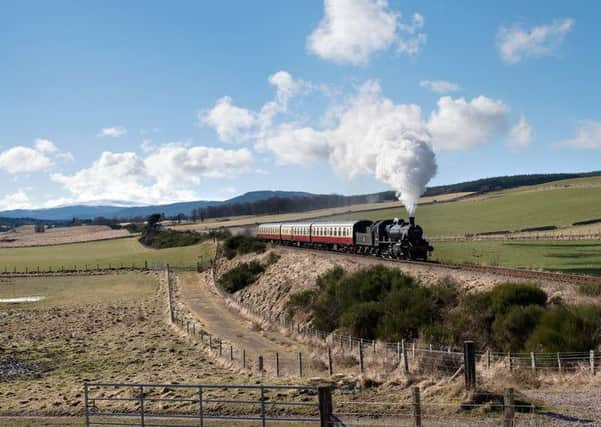Heritage railways getting steamed up over coal supply – John Yellowlees


Whether at the Bo’ness and Kinneil, Caledonian Railway, Royal Deeside, Strathspey or elsewhere, steam provides the magic attraction at the heart of the heritage railway appeal. Around 13 million visitors every year, many from overseas, help the sector generate an estimated £400 million for the UK economy. Not to mention the value heritage rail provides in terms of direct employment, skills training, education and development.
But the sector is under threat. Government strategy will see an end to the use of coal for power generation and household heat. Of course, steam locomotives burn coal. Indications from Government, that heritage rail will be able to continue to burn coal, go some way to reassure heritage railway operators, and their trade body, the Heritage Railway Association. The HRA’s chief executive, Steve Oates, says: “Being able to continue using coal is good news. But we may not have access to the right kind of coal, and if we do, it may come at a very high price.”
Advertisement
Hide AdAdvertisement
Hide AdThe UK still burns eight to 12 million tonnes of coal a year, but this is mainly in pulverised form for the power, steel and concrete industry. The sized and lumped coal, on which heritage steam depends, is only a tiny part of the coal used in the UK. If the government removes the need to produce coal for the domestic market, the heritage movement will become the only major user of lumped coal. The quantities needed will be too small to justify continued production by UK producers.
Coal used by the UK’s heritage railways represents less than 0.0025 per cent of total UK consumption. Steve Oates says: “Our concern is that only two million tonnes of the eight to 12 million used in the UK is mined in this country and there are no plans to grow any of these sites, or to open new ones.
“If UK production ceases, we’ll be totally reliant on imported coal. An unintended consequence of that is increased CO2 production.”
The Heritage Railway Association cites data showing that every tonne of coal transported from Russia to the UK creates more than six times as much CO2 as domestically-produced coal. “That’s not reducing CO2 emissions,’ says Oates. “That’s multiplying them – and then offshoring them.”
In a House of Lords debate on heritage railways, Culture Minister Lord Ashton said “We are working carefully to consider how we might achieve a successful balance between enhancing environmental and public health protection and ensuring that the UK’s heritage vehicle industry and indeed heritage houses that burn coal grates continue to thrive.”
Scottish Cabinet Secretary for Transport Michael Matheson acknowledged that since the closure of Longannet Power Station there was no longer a large user of coal to support local production.
The pathway of our energy system achieving net-zero carbon by 2045, he said, would not support a role for coal to make a comeback. But he agreed on the importance of heritage railways both as an historical educational tool and also as a tourist attraction, and believed that the sight of a working steam train making its way through the Scottish countryside had a wonderful and romantic appeal that was difficult to beat.
The heritage railway sector uses around 26,000 tonnes of coal a year. A single modest colliery could meet those needs. But it remains true that, without numerous coal-fired power stations, and many thousands of household coal grates, the UK’s long-established and geographically comprehensive coal distribution network will cease to exist.
Advertisement
Hide AdAdvertisement
Hide AdEven with the present supply chain in place, coal at around £170 per tonne costs heritage railways as much as 7 per cent of turnover. Just a modest increase in transport costs alone could see that percentage tip into double figures.
Of all the UK’s CO2 emissions, heritage rail produces just 0.02 per cent. That’s a tolerable amount, given the considerable returns heritage rail brings to the UK economy. Even so, the industry isn’t complacent.
“Awareness of emissions is very high on the industry agenda,” says Steve. “It results in measures like preheating boilers, better firing and driving techniques, and lower mileages – they all contribute to CO2 reduction.”
Much work is going on in terms of offsets, from tree planting to solar power in stations and buildings. Planning for a no-coal scenario continues, in experiments with oil-fired locomotives, wood and even coffee grounds for fuels. But in terms of CO2 reduction, few alternatives show promise. Development work with biomass fuels continues, but is only at very early stages. For the foreseeable future, there’s just no substitute for coal.
As well as attracting tourists, steam railways aid the building of a positive profile for mainline rail, necessary if Scotland is to achieve its climate targets. CILT hopes that it will see heritage railways meeting, and overcoming, the threat of a no-coal future.
John Yellowlees, chair, CILT Scotland.